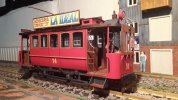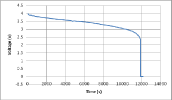As Jon says the market for kit built electric powered locos,, in the UK and outside of 16 mm (c 1:19) and 7/8" (c1:13), is virtually non existent. Yes, the makers of these products either offer an option or make their products readily regaugable between 32 & 45mm, the latter being the domain of predominantly associated, but not exclusively by, track powered "G Scale" operators. The reason - those scales tend to be favoured by those who operate "dead rail".
I own a GRS make L&B 2-6-2 Manning Wardle that was supplied as a kit. I originally built it, as supplied, as a track powered loco. After a while its performance dropped off due to regular track debris contamination and as a result of its wheel configuration. The UK climate is great for promoting that type of frustration. I removed the pick ups and installed a battery conversion to solve the issue. I included sound and working smoke later. It was my first battery loco that led me, along with a similarly recalcitrant Accucraft K-27, along the path from track to battery power for the whole fleet, eventually.
That first loco, as a design necessity, incorporated insulated wheels as its design was intended to incorporate current pick ups from the outset. See below the simple pick up arrangement I have now removed - LGB plungers soldered to brass strips on a plasticard mounting plate, for insulation, wires straight to the motor. The problem with converting a lot of the current "kit" product available is that it is not just working out how and where to fit pick-ups - that is not an option concidered in a lot of designs. You also have to see if they will need wheels replacing, as the may well not be insulated as supplied, or even conducting at all, glass filled plastics are becoming common on these products. It also follows that number of these kits, as is the nature of the market, tend to represent smaller prototypes that feature 0-4-0/0-6-0 wheel configurations that could lead to an increase in the likelihood of running issues. Max
View attachment 308091
P.S. I now have a fleet of 45 mm locos I can now run on fellow 16 NGM Association members' similarly gauged lines - most of them are dead rail. I also have a few that can regauge to 32 mm.



